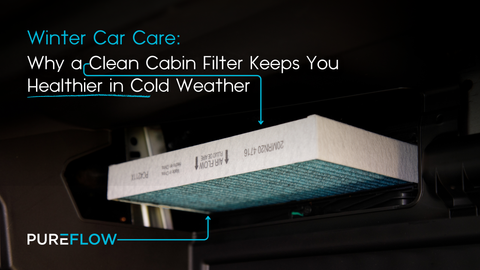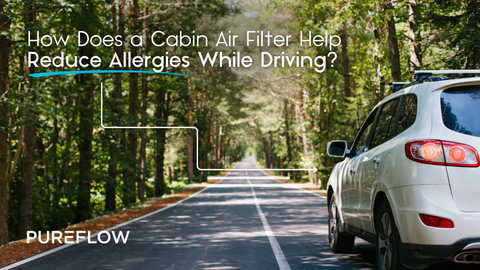As a result of over 400 wildfires currently burning through Canadian forests, a large swath of the United States population finds itself dealing with extremely poor air quality as smoke is driven south and east. One third of the fires are in the boreal forest of Quebec in the east, which doesn’t usually experience large blazes – and the effects are hitting northeastern states in the U.S. particularly hard. This week the New York City landscape took on a dystopian, hazy orange glow with the air quality index hitting readings between 300 and 400 from Wednesday to Thursday. Conditions have since improved, but the ordeal has prompted questions from commuters who wonder if they can do anything to protect themselves if they need to drive.
If you’re commuting in anything but certain Tesla models, the answer is: Sort of.
At this point it’s widely known that modern cars are equipped with a cabin air filtration system, which features a filter that should be replaced regularly. Cabin air filters play a critical role in maintaining the quality of air inside a vehicle. They work by filtering the air that enters the car's interior through the climate control system, otherwise known as HVAC (heating, ventilation, and air conditioning). These filters capture various pollutants and particles, including dust, pollen, and other airborne contaminants, which can significantly impact the air quality inside the cabin.
In the case of forest fires, the smoke and particles released into the atmosphere degrade air quality over vast areas, often even hundreds or thousands of miles away from the fire's source, as states as far away as Texas and New York discovered this week. Wildfire smoke contain a mixture of gases and fine particles from burning trees and other plant materials, which can be harmful when inhaled.
A well-functioning cabin air filter can help to protect a vehicle's occupants from degraded air quality. The filter can trap some of the particulate matter from the smoke, preventing it from entering the cabin when the HVAC system is in use. This means that, even when driving in areas affected by smoke from forest fires, the air you're breathing inside the vehicle may be cleaner than the outside air.
There are limitations, however, such as how the vehicle’s HVAC system was engineered. As we all know, not all vehicles are manufactured to the same level of quality. It’s also crucial to note that cabin air filters are not capable of filtering out all harmful particles and gases, especially ultra-fine particles and certain toxic gases that can be present in wildfire smoke.
Tesla Cabin Air Filters Enter the Chat
Tesla vehicles, especially the Model S and Model X, are known for their advanced air filtration systems, which include a High-Efficiency Particulate Air (HEPA) cabin air filter for the fresh air intake and another filter for cabin air recirculation. HEPA cabin air filters are significantly more efficient at removing fine particles compared to conventional cabin air filters and PUREFLOW® offers both for Tesla vehicles.
The HEPA filter in Tesla vehicles is part of their proprietary & "Bioweapon Defense Mode" system, as the company describes it. This unique cabin air filtration system is designed to remove a vast majority of particulate matter, as well as bacteria, pollen, pollutants, and other allergens from the air. This includes the fine particles present in smoke from wildfires.
In fact, in situations where the air quality is poor due to wildfire smoke, Bioweapon Defense Mode can be activated to create positive pressure inside the cabin to protect occupants. This helps to keep out any harmful particles and gases that might infiltrate the car's interior. The cabin air filters in Tesla vehicles, especially those with the Bioweapon Defense Mode feature, are specifically designed to protect against extreme types of air pollution, including those caused by wildfires.
Tesla's HEPA cabin air filter system can remove at least 99.97% of dust, pollen, mold, bacteria, and any airborne particles with a size of 0.3 microns. It’s important to consider that wildfires produce massive amounts of fine particles that are about 2.5 microns or smaller (often referred to as PM2.5), so a HEPA filter, in a true HEPA engineered filtration system like Tesla’s, should be able to effectively filter out most of these particles. Moreover, Tesla's system also includes an activated carbon filter, which can absorb and neutralize many harmful gases and odors. This can help to reduce exposure to the various gases present in wildfire smoke.
To maintain the effectiveness of any cabin air filtration system, regular maintenance, and replacement of the filters, as per the vehicle manufacturer's recommendations, are necessary. Tesla recommends replacing the HEPA cabin air filter every three years for the Model S and Model X, but the actual replacement frequency will depend on driving conditions and habits. When it’s time for you to replace yours, you can count on PUREFLOW® to deliver the best air possible in the cabin of your car.


















































